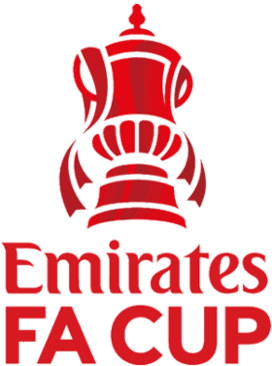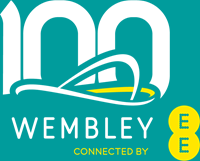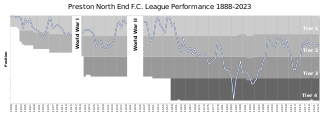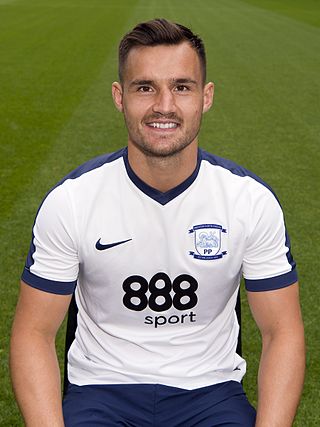
The Football Association Challenge Cup, more commonly known as the FA Cup, is an annual knockout football competition in men's domestic English football. First played during the 1871–72 season, it is the oldest national football competition in the world. It is organised by and named after The Football Association. Since 2015, it has been known as Emirates FA Cup after its headline sponsor Emirates. A concurrent Women's FA Cup has been held since 1970.

The 1966 FIFA World Cup was the eighth FIFA World Cup, a quadrennial football tournament for men's senior national teams. It was played in England from 11 to 30 July 1966. England defeated West Germany 4–2 in the final to win their first ever World Cup title. The final was level at 2–2 after 90 minutes and went to extra time, when Geoff Hurst scored two goals to complete his hat-trick, the first to be scored in a men's World Cup final. England were the fifth nation to win the event, and the third host nation to win after Uruguay in 1930 and Italy in 1934. Two time reigning champions Brazil failed to get past the group stages as they were defeated by Hungary and Portugal. It was the first time that defending champions were eliminated in the group stages after Italy in 1950. This would not occur again until 36 years later. It was opened by Queen Elizabeth II during the opening ceremony.

The Football Association Community Shield is English football's annual match contested at Wembley Stadium between the champions of the previous Premier League season and the holders of the FA Cup. If the Premier League champions also won the FA Cup, then the league runners-up provide the opposition. The fixture is recognised as a competitive super cup by The Football Association and UEFA.

Preston North End Football Club, commonly referred to as Preston, North End or PNE, is a professional association football club in Preston, Lancashire, England. They currently play in the EFL Championship, the second level of the English football league system.

Football is the most popular sport in England, where the first modern set of rules for the code were established in 1863, which were a major influence on the development of the modern Laws of the Game. With over 40,000 association football clubs, England has more clubs involved in the code than any other country. England hosts the world's first club, Sheffield F.C.; the world's oldest professional association football club, Notts County; the oldest national governing body, the Football Association; the joint-oldest national team; the oldest national knockout competition, the FA Cup; and the oldest national league, the English Football League. Today England's top domestic league, the Premier League, is one of the most popular and richest sports leagues in the world, with five of the ten richest football clubs in the world as of 2022.

Urbis is a building in Manchester, England, designed by Ian Simpson, which opened in 2002 as part of the redevelopment of Exchange Square. Originally a Museum of the City, a switch was made in 2005-06 to presenting exhibitions on popular culture alongside talks, gigs and special events. Urbis closed in 2010, reopening in 2012 as the National Football Museum.

Sir Thomas Finney was an English international footballer who played from 1946 to 1960 as a winger or centre forward for Preston North End and England. He is widely acknowledged to have been one of England's greatest-ever players. He was noted for his loyalty to Preston, for whom he made 433 Football League and 39 FA Cup appearances, scoring a total of 210 goals. He played for England 76 times, scoring 30 goals.

Deepdale is a football stadium in the Deepdale area of Preston, England, the home of Preston North End. Deepdale is widely recognized as being the oldest continuously used football stadium in the world, though this is contested.

Norbert Peter Stiles was an English footballer and manager. He played for England for five years, winning 28 caps and scoring one goal. He played every minute of England's victorious 1966 FIFA World Cup campaign. In the semi-final of that tournament against Portugal, he was given the job of marking the prolific Eusébio. His tough performance resulted in Eusébio being practically nullified for the entire game. Stiles also played in the final, which England won 4–2 against West Germany. His post-match dance on the Wembley pitch, holding the World Cup trophy in one hand and his false teeth in the other, was widely broadcast.

Andrew Michael Lonergan is an English professional footballer who plays as a goalkeeper for Premier League club Everton.
In English football, "The Invincibles" is a nickname used to refer to the Preston North End team of the 1888–89 season, managed by William Sudell, and the Arsenal team of the 2003–04 season managed by Arsène Wenger. Preston North End earned the nickname after completing an entire season undefeated in league and cup competition, while Arsenal were undefeated in the league in a run that stretched to a record 49 games. The actual nickname of the Preston team was the "Old Invincibles" but both versions have been in use although Arsenal is the only team to ever finish a 38 match season undefeated.
Tommy Booth is an English former footballer who played in the Football League for Manchester City and Preston North End, and was capped four times for England at under-23 level.

Henry Johnston was an English footballer. He was the Football Writers' Association Footballer of the Year in 1951. He spent his entire professional playing career with Blackpool, with whom he appeared in three FA Cup Finals, winning one. During his career, he appeared in all three half-back positions, and even moved up to centre forward when needed.

Wembley Stadium is an association football stadium in Wembley, London. It opened in 2007 on the site of the original Wembley Stadium, which had stood from 1923 until 2003. The stadium is England's national football stadium, and thus hosts the majority of the England national football team home matches and the FA Cup Final - the final of England's primary domestic club football competition. Wembley Stadium is owned by the governing body of English football, the Football Association, whose headquarters are in the stadium, through its subsidiary Wembley National Stadium Ltd (WNSL). With 90,000 seats, it is the largest stadium in the UK and the second-largest stadium in Europe.

Preston North End is an English football club in Preston, Lancashire which traces its origins to a local cricket club formed c.1863. This club moved to Deepdale in January 1875. They started playing football as a winter activity in 1878 and, in May 1880, took the decision to focus on football. Progress was rapid and the club became professional in 1883. They were a founder member of the Football League in 1888 and won the first two league championships in 1888–89 and 1889–90. Their team in 1888–89 also won the FA Cup and so became the first to achieve "The Double" in English football. In addition, the team was unbeaten in all first-class matches played that season and are famously remembered as "The Old Invincibles". Preston have had a chequered existence since 1890 and have won only one more major trophy, the 1937–38 FA Cup, when Bill Shankly was a key member of the team.
The West Lancashire derby is a local rivalry in English football between Lancashire clubs Blackpool and Preston North End. The derby has taken place across all four tiers of English football, but not the top flight since the formation of the Premier League. Blackpool were promoted to the Premier League in 2010; Preston North End have yet to reach it. They did not meet in the League between the 2009–10 and 2020–21 seasons, but did so again in the 2021–22 EFL Championship campaign following Blackpool's promotion from the third tier.

Robert Frederick Chelsea Moore was an English professional footballer. He most notably played for West Ham United, captaining the club for more than ten years, and was the captain of the England national team that won the 1966 FIFA World Cup. He is widely regarded as one of the greatest defenders in the history of football, and was cited by Pelé as the greatest defender that he had ever played against. Furthermore, Moore is sometimes considered to be one of the greatest players of all time.
Alexander Downie Dawson was a Scottish footballer who played as a forward. He was born in Aberdeen in Scotland, but began his professional career with Manchester United, where he spent four years before joining nearby Preston North End in 1961. In six seasons there, he made almost 200 league appearances and scored 114 goals. He then spent a year with fellow Lancashire side Bury, before moving to Brighton & Hove Albion. In 1970, he went on loan to Brentford, but his league career ended the following year. He spent two more seasons playing for Corby Town before retiring in 1973.

Bailey Colin Wright is an Australian professional footballer who plays as a centre-back or full-back for Singapore Premier League club Lion City Sailors and the Australia national team.
The Harry Langton Collection includes cultural and sporting items relating to the history of football and forms the core of both the National Football Museum in Manchester, England and the World Rugby Museum, housed in the South Stand of Twickenham Stadium.































